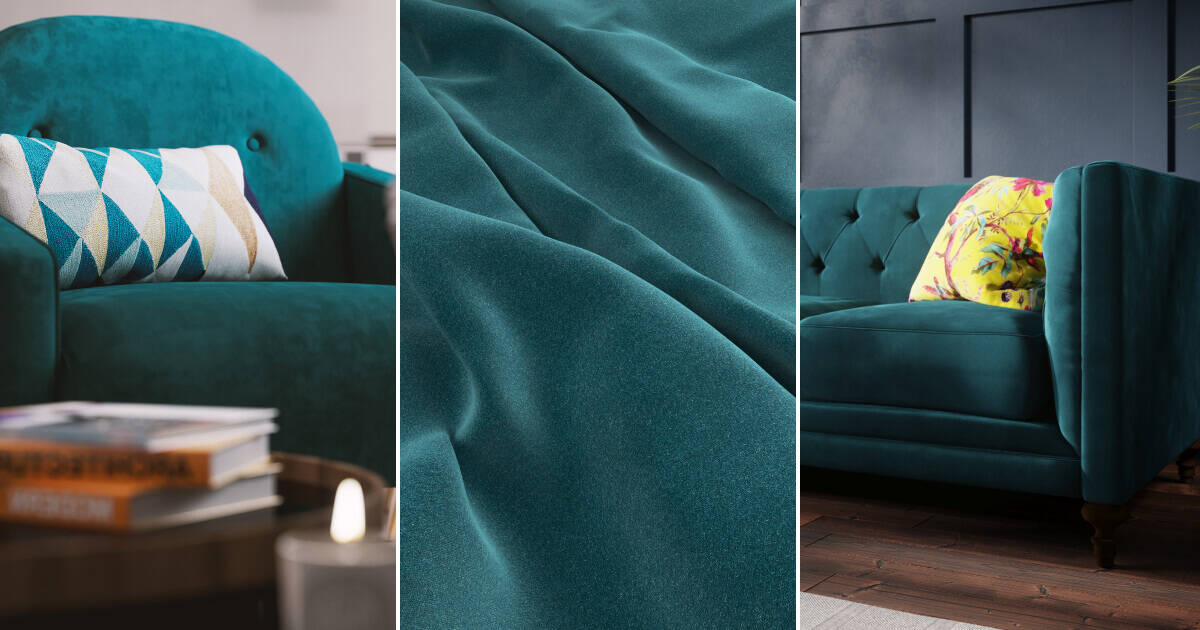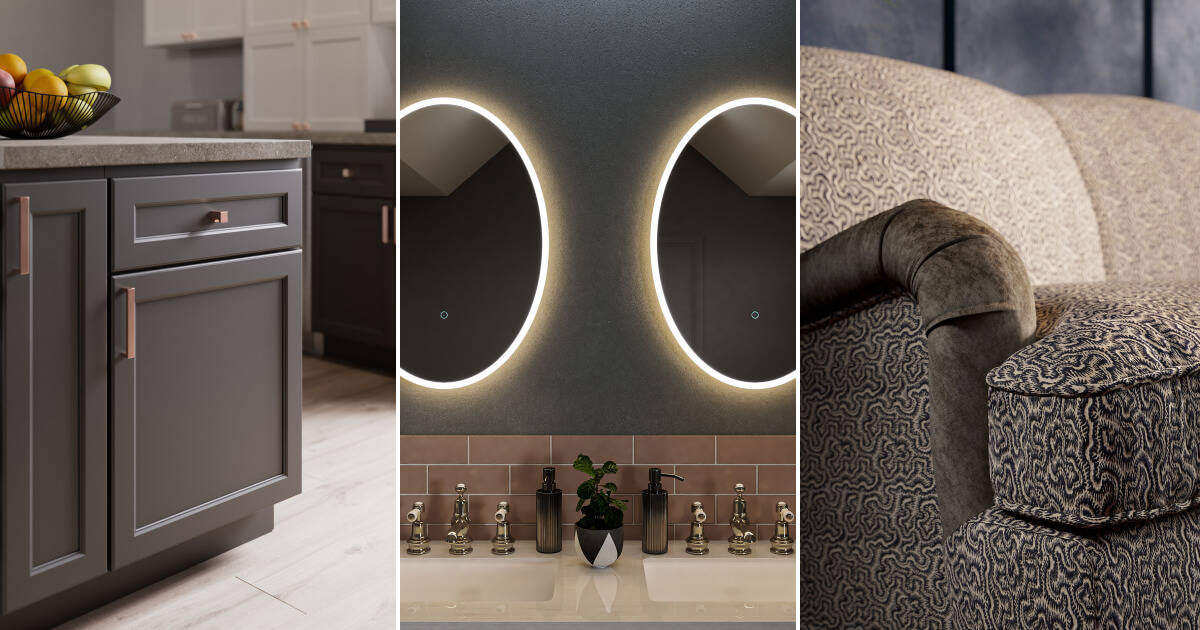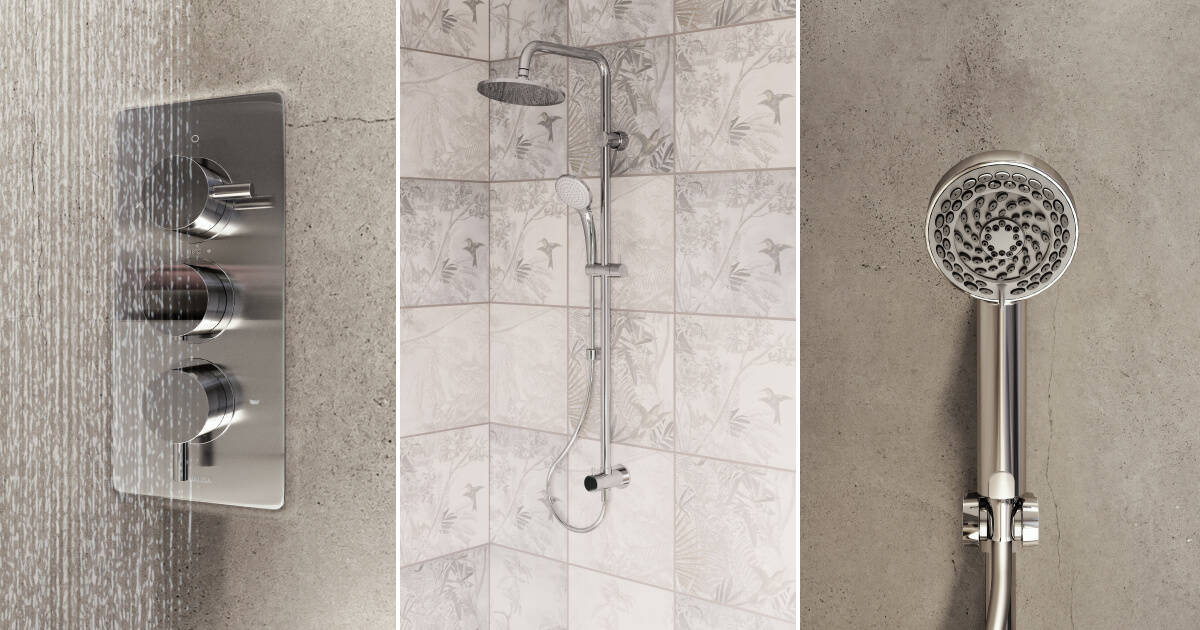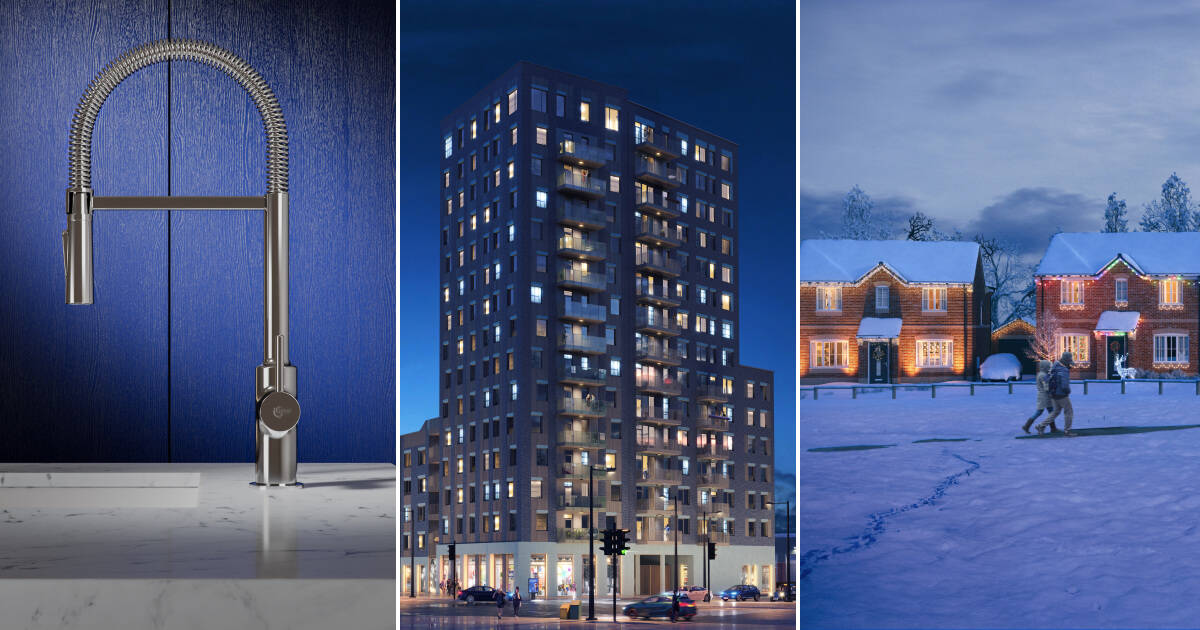
Whether it’s clothing, cars, or deceased actors – CGI has become embedded everywhere in our everyday lives. But not only has it become more embedded, it’s also become far more subtle, meaning that some of the most exquisite products you view online haven’t even been created yet (though you wouldn’t know it).
For example, it’s now been several years since IKEA shifted most of their product imagery to CGI (including a CGI avatar to market their products) – but you’d be hard pressed to notice this unless you knew already. Increasingly, the lifelike quality of interior and product CGI persuades manufacturers to abandon the traditional photoshoot and opt for CGI instead. And now it is the industry norm – but how has this come about?
This article explores how and why CGI has replaced photography as the main visual medium for manufacturers to show off their products.

New frontiers are being exposed as CGI is able to capture more and more visual details – like these examples with fabrics.
There are three main reasons for the move away from photography which are answered with innovative solutions through CGI.
1. Large time investment
Photography takes time, primarily because it requires a studio to be booked, the set to be designed and the props would need to be transported and installed. Apart from anything else, this necessarily involves a large loss of time. In the past, of course, this would have been a large investment of time, but now it has become a cost because there are much cheaper and more effective options.
On the other hand:
While CGI takes time to create and render, the difference is that there is a lot of time gained because it removes the complex logistics involved in setting up a photoshoot. For example, if an artist misses an important detail when visualising a room it can be adjusted as soon as it is spotted – easily, and at any point. Why? Because all it requires is for the file to be re-opened and for the detail to be added or corrected digitally. There is no need to re-shoot the scene.
2. Logistical difficulties
Hand in hand with the loss of time is the staggering efforts manufacturers needed to go to to photograph entire product ranges. Imagine assembling, listing, transporting, installing and uninstalling multiple kitchen layouts for a photoshoot. Moreover, imagine the diverse skillsets and staff needed to accomplish this effectively – from the people transporting the products, to the set designers and people building the set itself. Even with a small range of transportable products, it’s easy to see why manufacturers have increasingly moved away from photography.
On the other hand:
While organising a photoshoot is a logistical nightmare for a large product range, it’s no problem at all for CGI artists. All it requires is for products and rooms to be modelled digitally, needing no physical space or transportation. Additionally, the number of people working on the ‘set’ is drastically reduced and simplified (down to a couple of CGI artists). These products can be revisiting in the blink of an eye as they are stored as digital files. The easy access and digital existence means that each stage of the virtual ‘set’ can be shared with the manufacturer to ensure that the image is on course to present the product beautifully.
3. Escalating costs
Of course, money is a fundamental consideration for any conscientious manufacturer, and increasingly there is less and less to be gained by pouring money into set photography. Both of the reasons above require a huge amount of investment. While this was worth it in the past, it was still a risk – what if the images weren’t good enough? What if the set design took longer than expected? What if key components were missed when transporting the products? It’s understandable why CGI has been embraced as a cost-effective alternative, because it trivialises many of these difficulties.
On the other hand:
Interior and product CGI is not cheap, but it is much cheaper than photography. It reduces money spent on personnel, and all costs associated with logistics. It is also a far less risky investment, because images can be revisited digitally and adjusted.

From kitchen cabinets to bathroom mirrors, CGI is able to capture the vital details that are so important to selling products.
However, the beauty of photorealistic CGI is that it doesn’t just solve the problems described above, it adds several new strings to the product marketer’s bow. In 2022, CGI can exceed photographic quality. The one area where photography had the upper hand, CGI now reigns supreme. This is not to say that every CGI supplier can achieve this, nor that hyperrealism is the end goal for every manufacturer – but it’s yet another anxiety removed for manufacturers who may otherwise play it safe with photography because they fear that CGI cannot measure up.
The subtle details that were once so difficult to capture in CGI are now achievable – the softer edges, the mood of the lighting, the complex textures present in fabrics, the crisp fruit or freshly-picked flowers positioned in the kitchen. The warm, fluffy towels folded neatly in the bathroom.
The evolution of CGI technology and improvements in technique means that these photorealistic details are now achievable without a light switch being flicked or a flower being picked. And if something’s not quite right the first time around, you can simply go back and change it. No product installation needed, no photoshoot to rearrange, no props to send back across town.

Bathrooms were amongst the first parts of the home easily modelled in CGI, due to the hard and smooth surfaces.
To name just one advancement in CGI technology: 3D scanning. This technology allows a CGI artist to realistically recreate the small details within soft furnishings that really sell an image to the human eye: the natural crease of a pillow or fold of a towel. Any elements that had organic physical movement used to be notoriously difficult to model. Now they are integral to any kitchen or bathroom scene and easily created within design software such as 3ds Max.
The removal of past limitations
Year by year, the boundaries of what is achievable have been broken with innovations in CGI. What was once prohibitively expensive or complex is now much more accessible and affordable.This applies from the props or products that manufacturers want to include, all the way to the locale where they would situate their photoshoot. Whether it is an object or location, it can be modelled digitally anywhere in the world for a fraction of the cost and with exceptional quality.
Whether you want affordable Swedish design or a £1 million chandelier from the palace of Versailles, all you need is a clear brief and a good CGI artist and you get exactly what you need emailed to you within a matter of days. It is as simple as going online, finding the best talent and using them, no matter where they’re based in reality.

From products to homes, CGI is everywhere and the more technology progresses, the more experimentation and creativity is possible.
CGI is continually advancing, but one area where ground is still being broken is with the creation of realistic CGI people. The human eye can detect ‘fake’ people with a formidable amount of accuracy, so the most realistic way to include people in CGI is to photograph them first and then skillfully insert them into CGI (you can see an example here). However, as time goes on, we fully expect that realistic human propping will become the norm. The next stage in the process will be modelling people using 3D scanning. Where green-screens were once used to insert humans into images, soon it will be a simple handheld device that achieves this.
The trend for CGI will only increase as it becomes more intricate, realistic and accessible to more industries.

Is less really more when it comes to pr...